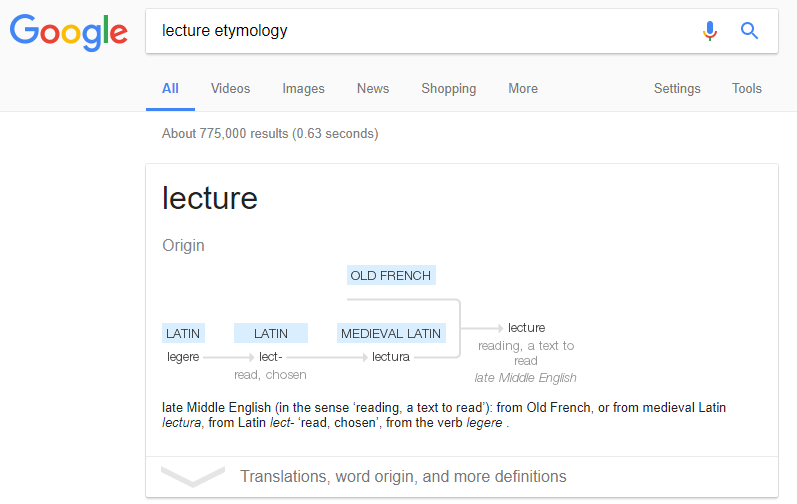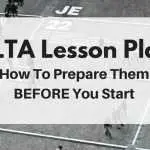Here are some tips that I wanted to share to help you for the first CELTA teaching practice, or TP1.
Namely, there are 3 main mistakes to avoid during TP1, which is something I know a lot of people get really worried about. I know I did – TP 1 was a big moment for me on the CELTA course in terms of confidence and progression.
And if you avoid these very common mistakes, then it should be a big confidence boost for you because you will have already identified things in advance that many people don’t even know about when they start the CELTA course!
[convertkit form=5012078]
1. Too Much ‘TTT’ in CELTA TP 1
The first thing to avoid on your first teaching practice, or in TP1 is:
Too much teacher talking time, or TTT, as it is often called on the CELTA course (because your trainers will talk about it a lot!).
Now, you might be thinking:
Well, teachers need to talk, because they’re teachers!
Yes, that’s true. Okay, it is the time you spend talking, but in English language teaching (ELT), there’s a slight distinction from many other teaching disciplines. This distinction is particularly clear in comparison with, for example, university lecturers.
This is because lecturers stand up there and just talk for an hour, because a lecture really means a ‘reading’ (see image below if you’re curious!)

ELT teachers, on the other hand, need to guide the students. You can use very brief instructions, prompts and gestures – just not too many words!
The way I look at it is the following:
When teaching English in front of a group of learners, think of yourself like the conductor of an orchestra. You’re not the lead musician, rather you are the person guiding everyone in that room to make the music sound good, or, to speak good English!

In short, you don’t just to talk to the students to get your point across.
You should also communicate with gestures and movements that everyone understands.
How to Beat the TTT Blues
So, what you need to really do is to avoid talking excessively when students don’t understand, because nerves come into this, and a lot of people start talking when they’re nervous (Confession #1: I am guilty of this, too!)
When you ask a question and you don’t get a response straight away the panic might start to set in.
You might start getting nervous, and start talking, and talking more. But problem is, the students might not understand the initial question as it was too complicated; talking more in a panicked way is unlikely to help them in that case!
To get around this problem, you could rephrase the question in fewer words. For example, consider the 2 statements below:
-
“Could you please tell me, how are you feeling at this exact moment?”
-
“How do you feel now?”
Now, I am not going to go into the linguistic/grammatical differences but hopefully you can see that statement 2 is much shorter and clearer than statement 1.
Obviously, statement 1 is closer to what native speakers would say (although this sentence would even be a little strange even for extremely polite British people!), but it is all about making your learners understand the task – which statement 2 does a better job of than statement 1.
So, in summary – be mindful that continuously talking is not likely going to help your students understand you.

Other Ideas for Helping Students Understand You in CELTA TP 1
You can, as I said, use many gestures, or movements to help you.
You can also slow yourself down, and you can of course use the whiteboard (or equivalent) to display words or images to help add to your points.
Now, hopefully, when you’re writing your lesson plans, these steps to facilitating student comprehension will become clear.
This is because you should start to see the progression of students’ learning and how you have to introduce new concepts and language gradually. You can’t just start on a concept and go straight into it – you have to build up to it in a staged way.
Using Questions
Think also about asking the students questions to help them get involved in the process of understanding, because it’s not all directly about the actual language point you’re teaching them.
It’s also about getting students to understand somebody speaking to them in English.
Think about that, and involve the students by asking them short, snappy questions as you go.
Now, these questions could just have ‘yes’ or ‘no’ answers, and they could be one or two, and you’ll be asked to write them down on your lesson plan.
These might also be known as concept checking questions, or CCQs. If you prepare these, it shouldn’t be a problem, and it should also help you prepare for that teacher talking time to keep it to a minimum.
Because really, the students are the ones who you want to do the most talking, so think about that.
Also, crucially, think about how you will respond if you have a silent room when you are giving instructions, particularly to very low level students. That’s really key.
2. Not Using ‘Graded Language’ in TP 1
One major problem trainees have is not grading their language.
Now, grading your language, or using graded language, is very simply: changing how you speak to suit the learners and their level.
For example, if you give the same set of instructions to an upper intermediate level group of students and to an elementary level group, it’s likely that the elementary level are going to have more difficulty with this.
Hence, you need to think about how you’re going to word these instructions, particularly if you’re teaching lower level students.
Think very carefully about your instructions. Again, much of this comes out in the lesson plan, but be thorough with that lesson plan, and it will help you.
Just make sure that your questions aren’t full of big words, words that students they don’t know, or they’re unlikely to know, and long, complex instructions.
As I mentioned about the CCQs, or the concept checking questions, just try to build in a couple of yes or no questions into each stage of instructions so that the students can go on the journey of understanding the task as you take them through it.
So it’s not all about you just telling them and hoping they’ve understood. It happens all the time in ELT classrooms that students don’t understand.
No Instructions are Perfect
Now, I’m not saying that following the points above will mean everyone understands every time, but if you get, let’s say, 7 out of 10 students to understand, then they can then pull the weaker students through.
Think about that as well – you don’t need 100% of students to understand everything at the beginning to get through the task, but most should!
If they don’t understand a task, and this is an extra point, don’t be afraid to stop them. Bring them back, and just run through the questions again or something similar to check the understanding.
But, grade your language appropriately and think about how you are speaking to them, and try to identify these words. You know, you don’t need to speak like you’re talking to a friend, just speak like you’re talking to a low level group of students, and it shouldn’t be a problem for you.
3. Planning Too Much for CELTA TP 1
A very common thing that many CELTA trainees do in TP 1 is planning too much. (Confession #2: Over-planning is something I am guilty of, even today!)
Many CELTA trainees plan too much for CELTA TP 1 because the exact timings in a CELTA lesson plan, how long it takes to do things, is so hard to know when you start. As an experienced teacher, it’s still hard to predict timings when you do new things, but you get better idea over time.
However, you shouldn’t worry too much about this because on your lesson plan, you will need to give very specific minutes and timings. If you do this really thoroughly, you will start to see how long things can take in a classroom full of learners.
Now, coming back to a potential issue mentioned earlier, think about what happens if students don’t understand your questions. What if you ask them questions and you have a silent room:
How long are you going to wait? Maybe 10 seconds?
But if this silence happens a couple of times (which is very possible), and then you have to rethink and change things, or write something on the board, all of these things can add minutes to your lesson, which you might not even have thought of as an anticipated problem when writing timings on your detailed plan!

Solution to Avoid Planning Too Much in TP 1
What I would say is to be generous with your timings.
This is because when you say to yourself “Oh, that activity won’t take long,” in reality, when you’re in front of a group of students, lots of things (good or bad) can happen.
For instance, you might have to write something extra on the board, lose the right sheets to hand out and need to find them again, or you might have to stop someone who’s doing something annoying and explain the class rules (again!), etc., etc.
All the little things mentioned above can add several minutes to your lesson!
I would say plan for about 80% of the time you have been given. If you think your activities will take 30 minutes, make your lesson plan timing accounts 35 minutes (approximately 20% more than you think).
I know it sounds a bit scary to do it that way, but I always used to over plan, and I was then struggling to rejig things as I went along (not fun).
What you can do as a back-up, if somehow you get through everything very quickly, is to have a fun activity ready to use at the end. This would be just in case and a confidence booster for you.
Maybe some quick game like bingo or something relevant if you can do it, hangman – whatever game would be (partially) relevant to fill a couple of minutes if you need.
But, the most common thing is that people over-plan because they’re worried about standing at the front of the class with nothing to say, but it almost never happens that way, especially if you’ve completed the plan properly and in the right amount of detail!
Summary: Most Common Mistakes to Avoid for CELTA TP 1
There you have it, three key mistakes to avoid. If you follow the points above and plan with these in mind, you’ll be ahead of so many people!
So, try to:
-
keep your TTT, or teacher talking time, to a minimum.
-
grade your language appropriately.
-
plan for activities that you think will fill approximately 80% of the time you have
If you do these things, TP1 on your CELTA course should be easier knowing that you’re not making the most common errors.
I hope that’s useful. Let me know if you have any more questions. You can get me at:
On Twitter @stephenbeale or Facebook through facebook.com/celtahelper
Thanks again, and talk to you soon!
CELTA: Teaching Pronunciation – 9 Free Online Resources for Having Fun with It!






